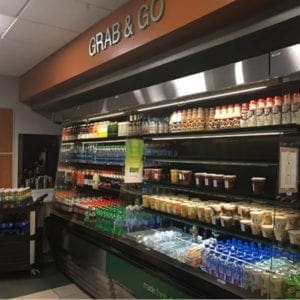 We are very familiar with the resort, vacation and fractional markets, and have witnessed tremendous expansion in the way of international four and five-star hospitality brands developing resorts, fractional vacation ownership assets and private residence resort clubs. As with all things hospitality, the resort, vacation and fractional sectors continue to evolve.Ê
We are very familiar with the resort, vacation and fractional markets, and have witnessed tremendous expansion in the way of international four and five-star hospitality brands developing resorts, fractional vacation ownership assets and private residence resort clubs. As with all things hospitality, the resort, vacation and fractional sectors continue to evolve.Ê
The key drivers for the increase in developmentÊareÊthe following:
- Strong interest from internationalÊinvestors in hospitality development projects with an upside in real estate development
- Change in specific population. In definition, baby boomers (1946 – 1964), generation X (1965 Ð 1984), generation Y (mid 1970s Ð mid 2000s), and millennials (b. 1982 Ð 2012).
- Availability of land for development/acquisition in secondary and tertiary markets, andÊinternational destinations
- Incentives/tax credits offered by local government municipalities in markets and destinations both domestic and international Ð in the case of international, EU incentives are provided to member countries for development
Although the above key factors are driving expansion in the resort, vacation, fractional and private resort club markets, we should go back in time and give credit where credit is due. Much of what happens in our industry today in terms of real estate development and investment is simply because hospitality visionaries could forecast the demand and growth.Ê
When an investment opportunity is presented to me I always consider the industry greats who had the foresight to create a specific category or asset type.ÊThe reason is simple, asÊin our industry new hospitality products or assets are typically a variation or expansion of an existing model or strategy. And that is a good thing in my opinion – to always strive for improvement to meet demand and a changing marketplace using successful existing models.
In the case of the resort, vacation and fractional hospitality market segments, an industry giant by the name of Ed McMullen, Sr. comes to mind.ÊEdÊis a visionary and led the charge in resort development and vacation ownership overÊ40 years ago. He founded the American Resorts Group of Companies, which became a leader in the resort and fractional ownership market.
Ed’s role in this sector is important as he changed the game in terms of the residential resort and vacation ownership experience.ÊIt is important to understand his incredible contributions. In 1984 The American Resorts Group he founded merged with Marriott Corporation to form Marriott Ownership Resorts, Inc. (MORI), launching the International vacation ownership business. Under his leadership, MORI developed properties in the US, the Bahamas and Spain, becoming the world’s leader in vacation ownership sales.ÊToday, MORI is recognized the world over as Marriott Vacations Worldwide Corporation and maintains its leadership position all over the world.ÊHow cool is that?
Because of Ed’s contribution and vision, the industry has evolved to now include resort residential development categories such as mix-use resort lifestyle, luxury resorts and residences and private (by invitation-only) residence clubs. Thank you Ed. And thank you Larry Gildersleeve for introducing me to Ed, who is another industry giant.
Domestic and international investors alike are entering the above resort vacation market primarily for the upside and ROI, but also because of the changing demographics contributing to the increase in demand for integration of hospitality resort, residential and lifestyle amenities and services.
In the world of hospitality real estate, mix-use resort lifestyle is defined as development projects comprised of light retail, hotel and resorts with a residential component that are typically luxury hospitality services, amenities, facilities and programs; health and wellness and fitness facilities.ÊFive-star luxury hotel brands are expanding their portfolios to include high-end residences with access to resort amenities, facilities, services and programs. And then there is the granddaddy of them all, the Uber luxury and exclusive private club and residences; some by invitation-only.ÊWhat the above categories all have in common are locations in highly desirable destinations; i.e. waterfront andÊnatural surroundings conducive to healthy living lifestyle and superior services to include premier F&B outlets.Ê
The driving force behind the growth in the resort, vacation fractional and private club sectors are baby boomers desiring a lifestyle that mirrors a luxury hospitality experience for amenities and services in idyllic settings, with an emphasis on community, health and wellness. And they can afford it! They are well traveled with preferences for specific luxury brands. This segment is not quite ready to retire, but instead desire to create balance in an environment that provides all of the features of a luxury hospitality experience. In the real estate investment segment, there is tremendous demand for resort residential, fractional ownership and private club residence development projects domestically and internationally, and the brands are noticing.Ê
Destinations such as Spain, south eastern European countries (Croatia, Greece, Montenegro), the European section of Turkey, the Caribbean and Central America (Argentina, Costa Rica, Panama City) are in demand and expanding tremendously.ÊIn the US, the west coast and Hawaii are quite active and will continue to expand for the very same reasons I mentioned above: location andÊtopography conducive to a healthier lifestyle.
So how does a hospitality professional stay ahead of the growth spurt in resort residential, fractional vacation and private club residence markets?ÊTo borrow a phrase from a good friend and hospitality colleague, ÒFollow the CheeseÓ; in this case, pay attention to where investors are investing and developing.ÊConsider the five-star luxury brands recently announcing new development and openings, and the markets in which they are developing.ÊConsider the residential, amenities, services and facilities they are incorporating; their growth strategies will provide an indication of current demand and future of the resort, withÊresidential, private club residence and fractional ownership segments both domestic and international.
What hasn’t emerged just yet is a platform and/or development projects specifically targeting millennials, gen X and Y.ÊReasons are five-star luxury investment levels and the price of ownership and residences are too high this group. Keep in mind this is a younger group building careers, and/or starting families. There is a tremendous opportunity for developers and brands to attract the gen X and Y markets by using models across sectors such as Co-Work, social networks/clubs with international membership and communal living. I will leave it at that and for others to build the model and develop.ÊA future hospitality visionary reading this article will get it!
As I identify potential hospitality, resort, vacation and fractional investment opportunities for clients, I make it appoint to review the successes and visions of hospitality giants.ÊIn my opinion they were clearly onto something, and while the demographics changed the foundation remained relevant and can be expanded upon. In other words, they provided the blueprint to the future of the hospitality ownership experience.ÊIf we look closely we can identify attributes relevant to today’s market, expand upon them to create demand from emerging markets and future generations.ÊIt remains a very exciting time in the hospitality industry with tremendous opportunities for growth if we take a moment to revisit history, follow new developments and follow the cheese.
By Trica Jean-Baptiste
 Trica Jean-Baptiste is the founder and President of Morgensheer Hospitality, Inc., a consortium of hospitality, real estate, development, sales and marketing and communications consultants. The Morgensheer Hospitality Inc. Consortium provides strategic hospitality services to real estate investors acquiring and developing hospitality assets. Trica is also a licensed real estate sales associate specializing in commercial real estate Ð hotels, resorts, hospitality development projects and investments. Prior to embarking upon a second career in commercial real estate, Trica was President and founder of Trica Jean-Baptiste Communications, LLC; an award-winning boutique travel hospitality PR companyÊbased in NYC for 15 years.ÊWhile heading up Trica Jean-Baptiste Communications, LLC. she represented some of travel’s leading hotels, resorts and tourism units: Rocco Forte Hotels, Star Hotel’s the Michelangelo Hotel, St Giles Hotels New York, Hotel St-Barth Isle de France, Rosewood Hotels’ Caneel Bay and Little Dix Bay, Hotel Esprit St-German (Paris, France), Dubai Tourism, Scotland Business Tourism Unit, Brussels to name a few.
Trica Jean-Baptiste is the founder and President of Morgensheer Hospitality, Inc., a consortium of hospitality, real estate, development, sales and marketing and communications consultants. The Morgensheer Hospitality Inc. Consortium provides strategic hospitality services to real estate investors acquiring and developing hospitality assets. Trica is also a licensed real estate sales associate specializing in commercial real estate Ð hotels, resorts, hospitality development projects and investments. Prior to embarking upon a second career in commercial real estate, Trica was President and founder of Trica Jean-Baptiste Communications, LLC; an award-winning boutique travel hospitality PR companyÊbased in NYC for 15 years.ÊWhile heading up Trica Jean-Baptiste Communications, LLC. she represented some of travel’s leading hotels, resorts and tourism units: Rocco Forte Hotels, Star Hotel’s the Michelangelo Hotel, St Giles Hotels New York, Hotel St-Barth Isle de France, Rosewood Hotels’ Caneel Bay and Little Dix Bay, Hotel Esprit St-German (Paris, France), Dubai Tourism, Scotland Business Tourism Unit, Brussels to name a few.















